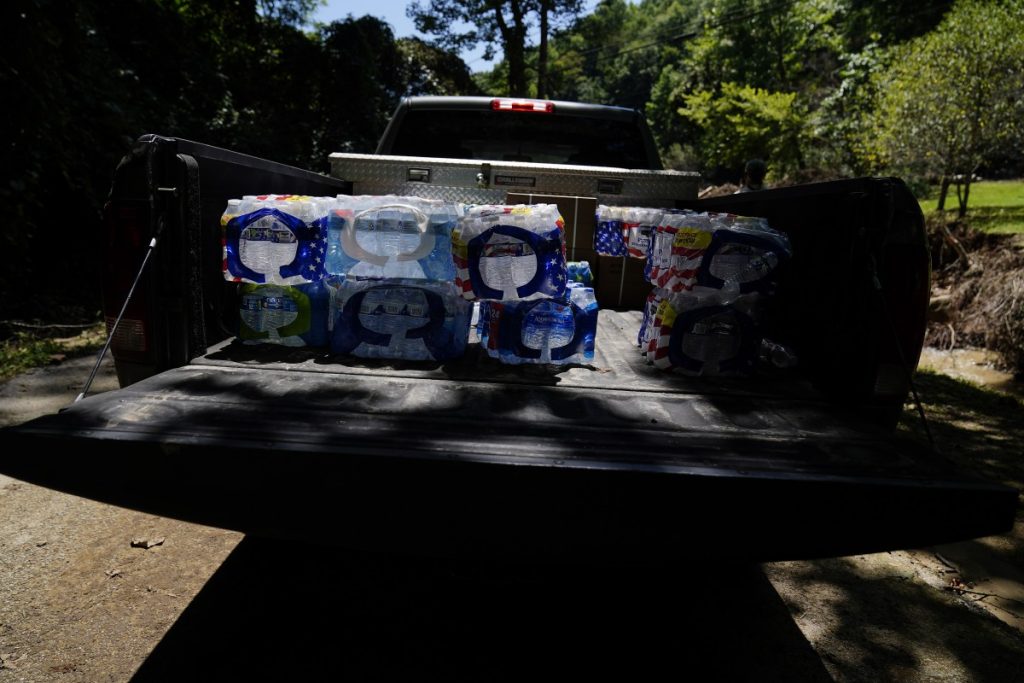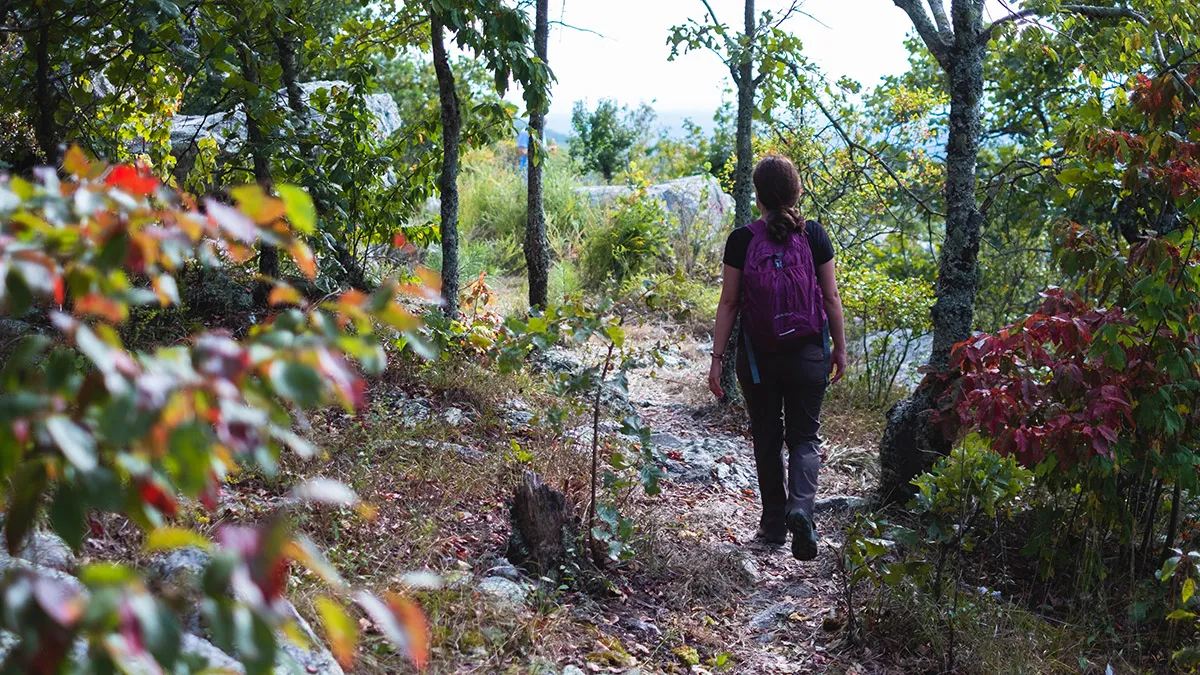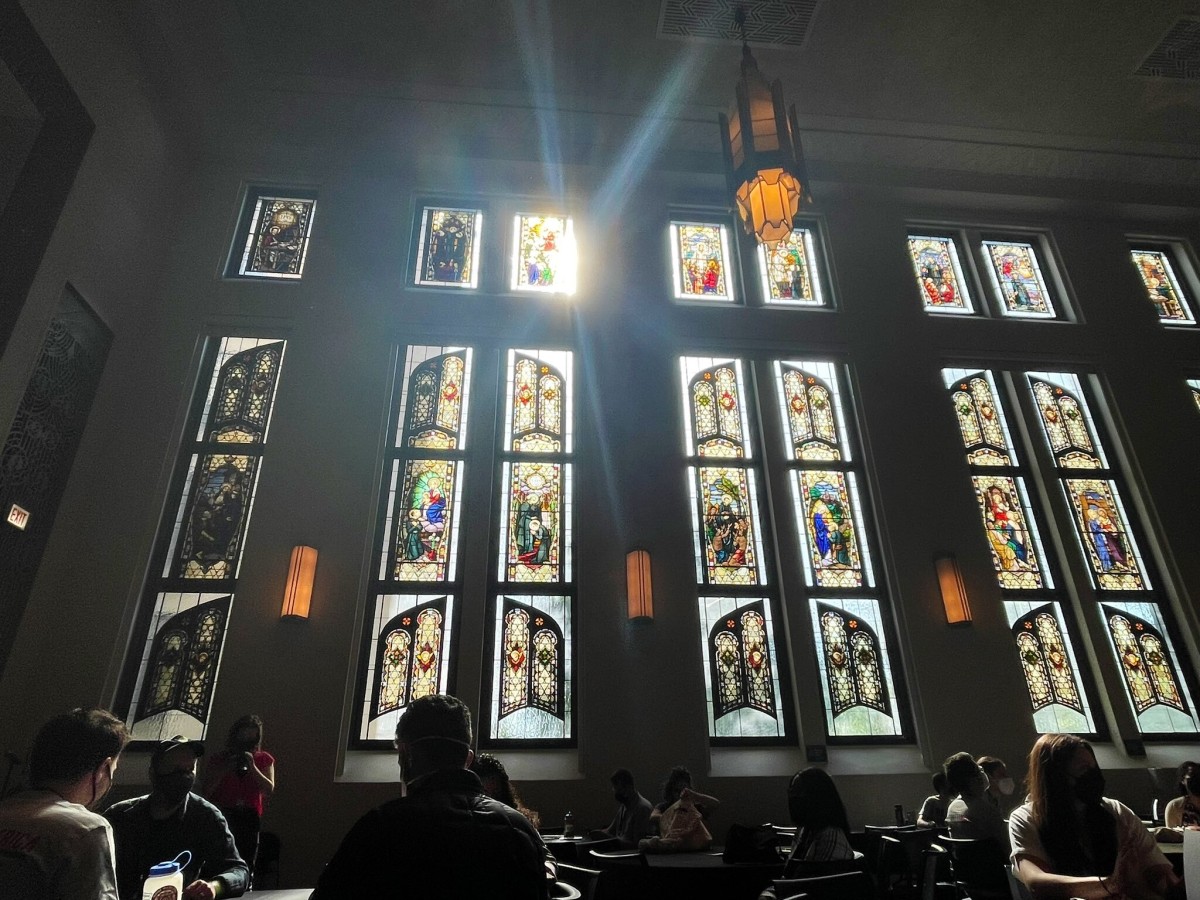In eastern Kentucky, they waited for the rain to stop.
“I’ve never heard that much rain that hard in my life,” said Tracy Counts, who attends First Presbyterian Church in Hazard, Kentucky, one of the hardest hit communities in last week’s historic flooding in the eastern mountains of the state.
When the rain finally let up, late in the day on July 28, the north fork of the Kentucky River in Whitesburg crested at nearly 20 feet, six feet higher than the previous record set in 1957.
Just upstream, Troublesome Creek, which is part of the Kentucky River watershed, overflowed its banks, sweeping away homes and other buildings in Perry, Knott and Breathitt counties.
They included Applashop, the media outlet that began as a film workshop in 1969 to empower Appalachians to tell the region’s story. A century’s worth of archival material stored in Appalshop’s vault may have been lost to the flood, according to the Lexington Herald-Leader.
The Hindman Settlement School, which has supported Appalachian writers and makers for 120 years, also suffered extensive damage. Photos posted on the school’s Facebook page show offices and workshops covered in mud. School leaders believe much of the archival material at the school can be saved, but it will be a painstaking and long process.
As of publication, at least 37 people have lost their lives, and Kentucky Governor Andy Bashear expects that total to rise.

The storms that caused destruction in eastern Kentucky – which also shattered records when it comes to rainfall amounts in a 24-hour period – stretched into southern West Virginia as well, damaging roadways and other infrastructure. Parts of that state are still recovering from historic flooding six years ago in 2016, when more than 20 people lost their lives and thousands more their homes.
Data shows climate driven heavy rainfall means more frequent, severe weather events like what happened in Kentucky and West Virginia are on the horizon. In 12 Appalachian counties, at least half of all residences are at risk for flooding that’s the result of climate change, according to an analysis by the Ohio Valley ReSource.
And when those extreme weather events hit the region, its faith communities that most often lead the clean-up and relief efforts.But today, that response comes as church membership – and along with it, financial gifts – declines here and around the country, and in the wake of additional challenges caused by COVID-19.
The Range of Response, Short and Long Term
Whitley Henson, who directs youth and young adult ministries for the Red Bird/Central Appalachian Conference of the United Methodist Church, says that local churches play a big role in comforting people in the days that immediately follow a disaster.
“There’s that security blanket that kind of wraps around us and says, ‘We know, we’ve been hurt, but we’re still loved,’” Henson said.
She speaks from experience. A 2012 tornado tore through her hometown of Paintsville, Kentuky, near the border with West Virginia. Local churches, she said, helped her town get through it.
“Having that community to stay together and to encourage one another was a big thing,” she said.
But churches also serve as supply depots and shelters during disasters. Last week, First Presbyterian Church in Hazard, the largest town in and seat of Perry County, opened up as a Red Cross-designated shelter.
“That first night, we had 29 people airlifted here from Breathitt County,” said Tracy Counts, who coordinates relief efforts for the church.

Over the weekend, First Presbyterian members loaded pickup trucks full of bottled water and other supplies, passing them out to anyone who needed them. Fire departments, EMS workers, local government officials and congregants worked together, texting with requests for help, and sharing relief information with the community on Facebook pages and Twitter.
By Sunday afternoon, the church was no longer serving as a shelter, but Counts said the building is still packed with donations – water, cleaning supplies and canned food that volunteers will distribute in the days and weeks ahead.
It’s the “tiny networks” of people that will get Hazard through this disaster, said Deronda Mobelini, another church member. “In small towns, everybody knows each other. That helps us to get stuff done.”
But long term recovery in eastern Kentucky will likely take years, and the faith community will have a significant role to play in those efforts as well, according to Jenny Gannaway.
Gannaway is the executive director of the West Virginia chapter of Volunteer Organizations Active in Disaster.
VOAD continues its recovery efforts from the 2016 flood in West Virginia, which includes the construction of more than 40 bridges destroyed by floodwaters. In March, West Virginia Governor Jim Justice officially opened “Big Blue,” near Clendenin. The 310 foot bridge provides access to 14 homes and is the largest bridge constructed by VOAD partners, and included work by Mennonite builders.
Most of West Virginia VOAD’s membership consists of faith-based organizations, including the American Red Cross and the United Methodist Committee on Relief, along with the African Methodist Episcopal Church, Catholic Charities and the WV Episcopal Diocese.
West Virginia VOAD has also been helping with the recovery efforts in eastern Kentucky because “their VOAD organization is based in the western part of the state,” Gannawaysaid.
“We’re just closer.”
As Disasters Increase, Church Membership Declines
A predicted increase in the number of catastrophic weather events coupled with declines in church membership could present challenges for local faith-based disaster response capacity.
The fourth National Climate assessment report shows that heavy downpours like those experienced in Kentucky are increasing – up more than 50 percent in that state in the last few decades. Since 1967, all of West Virginia’s counties have experienced flooding, some as many as 10 times.
Meanwhile, church attendance is declining. Only about a quarter of U.S. adults say they attend church weekly, according to a December 2021 poll published by the Pew Research Center. Records maintained by the West Virginia Conference of the United Methodist Church show that membership rolls declined about 16 percent from 2010 – 2020.
In Kentucky, First Presbyterian flood relief coordinator Counts says her church had 80-100 members 16 years ago when she started going to church. “Now, we have about 20 people in church on Sunday,” she said. “And every one of them has helped this week.”
A decline in membership often equates to a decline in financial gifts, for the churches themselves, and that has consequences for their disaster relief efforts. Opening up the church as a shelter means keeping the lights and air conditioning on, which translates into big utility bills with fewer church members to help defray costs.
“I’m not complaining,” said Counts. “People have watched their homes get taken by the river. We’ll figure out the electric bill.”

In neighboring Clay County, United Methodist flood relief team member Whitley Henson said they are relying on relief funds coming from outside of the region.
“We’ve received several thousand dollars from the larger UM Kentucky conference,” she said, but the United Methodists in Minnesota will give 40 percent – about $20,000 based on recent figures – of a special annual offering to the Red Bird/Central Kentucky Conference this year.
During the first year of the COVID-19 pandemic, end-of-year cash donations to WV VOAD decreased “by at least 50 percent,” according to Gannaway.
“It also really impacted work teams, and kept them from coming in to help,” she said.
This year, volunteer work teams have come back online and contributions have rebounded somewhat, but Gannaway said VOAD is applying for federal disaster block grant funding to make up the gap, along with seeking private foundation support.
But Gannaway says the decline in donations and the loss of some volunteer teams from out-of-state due to the pandemic have not affected WV VOAD’s capacity – for now.
“We have still been able to keep up with every disaster that we have had, to make sure that families have the supplies they need to start recovery,” she said.
Still, she acknowledges that a rise in disasters accompanied by a decline in church capacity in the region means that VOAD lives with an all-too-familiar Appalachian reality: doing more with less.
Appalshop has provided this resource with information on how to support people in the aftermath of the 2022 floods in eastern Kentucky.
Laura Harbert Allen is a Report for America corps member covering religion for 100 Days in Appalachia. Click here to help support her reporting through the Ground Truth Project.



